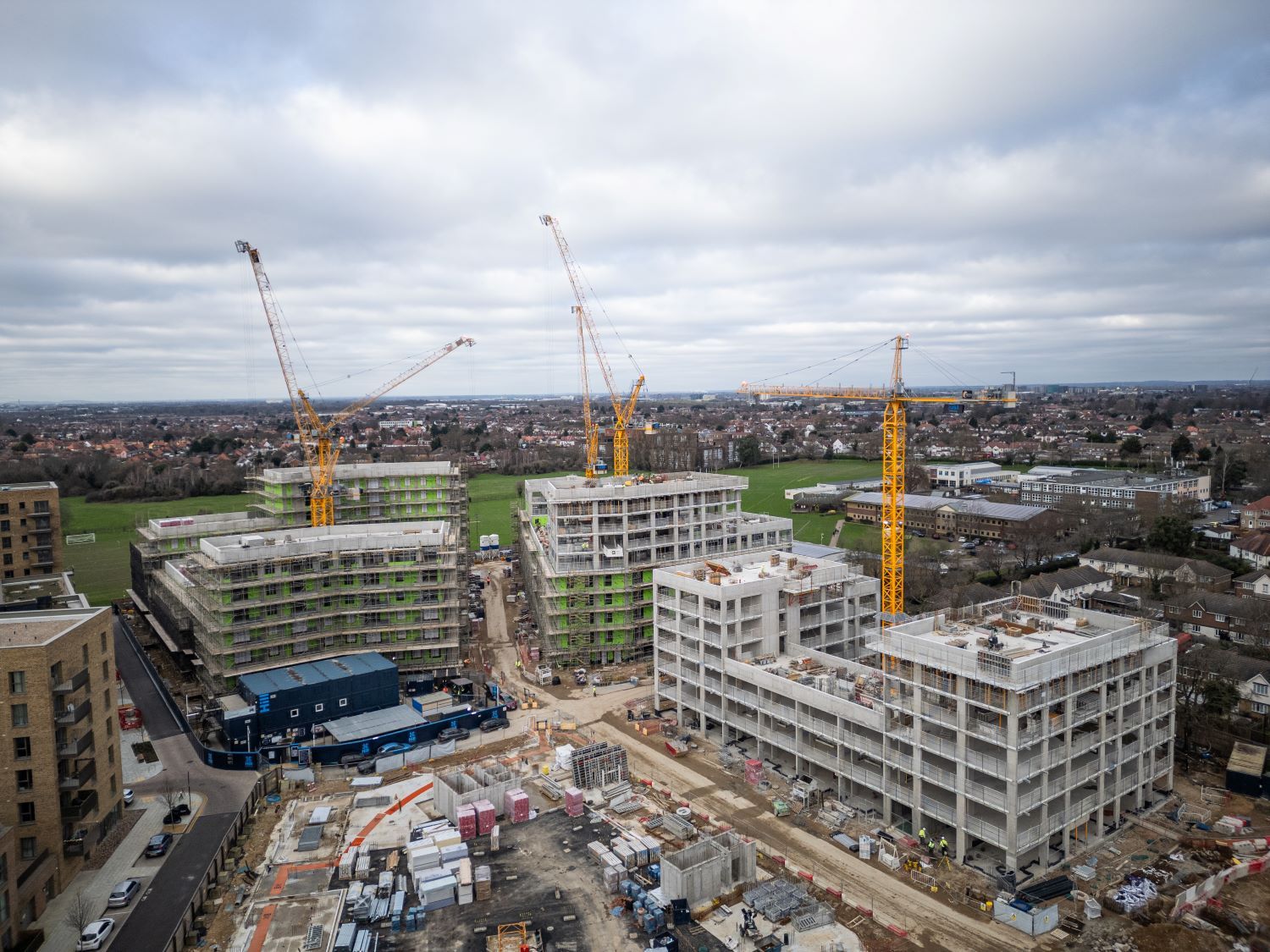The demand for smart and safe equipment continues to grow within the construction sector, especially in densely built urban areas where tower cranes and other machinery often operate in close proximity. How do you improve safety in these environments, and how do you solve the challenges that arise? With these questions, Falcon Tower Cranes approached our UK distributor fortop.
The risk: improperly parked luffing jib cranes
The main risk occurs in high-rise environments where multiple luffing jib tower cranes operate side by side in limited space. The greatest hazards arise outside working hours: if a jib is not positioned correctly in its parking position, it may enter the airspace of a neighbouring crane or create other dangerous situations.
Although operators park cranes according to regulations, human error, bad weather, or technical failures can lead to misalignment. This is a risk you want to avoid.
The solution: automatic verification of the parking position
Falcon sought a retrofit solution for the existing fleet of JASO Luffing Jib cranes, without modifying the existing control system. The idea? An automated, sensor-based system that confirms the jib is safely parked and immediately issues a warning when it is not.
The core of the system is a customised QG40N tilt switch from DIS Sensors:
- Compact sensor
- IP67 protection
- SIL CL1 certification
- No moving parts
- Precise measuring range of ±0,8°/±1,0°
This enables real-time monitoring of the jib’s parking position. Any deviation triggers a clear signal so the operator can correct it before ending the workday.

Installation: independent of the crane control system
Falcon’s engineers mounted the sensor vertically on the jib and configured it so that a warning appears when the jib moves outside the permitted tolerance. The system operates completely autonomously and is independent of the crane’s control system.
The results: fewer manual checks, greater confidence
Since the rollout of this system, Falcon has seen a significant reduction in manual inspections and growing confidence among customers. The sensor acts as a digital watchdog that checks whether the crane has been safely left after working hours.
“It was about addressing a real risk with a reliable system that we could retrofit on every crane,” Falcon explains. “With support from fortop UK, we developed this from the ground up using the right sensor for the application.”
In addition, the solution aligns with modern safety requirements such as crane zoning and stricter protocols outside operating hours. At some locations, the functionality has even become mandatory.
How does DIS Sensors view this collaboration?
Pim Wieske, Sales Director at DIS Sensors:
“This project is a perfect example of how we prefer to work: a sensor technology that is easy to adapt and can be quickly applied together with our distributor to meet the customer’s exact needs.”




